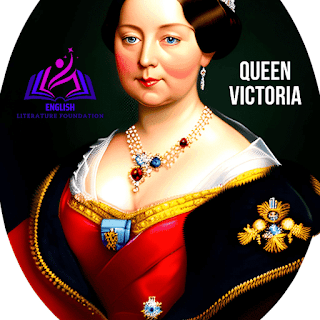"Uncovering the Fascinating World of The Victorian Era: A Comprehensive Guide"
The Victorian era is a period in British history that
spanned from the year 1837 to 1901. This era was named after Queen Victoria,
who reigned during this time. The Victorian era is characterized by its
conservative values, industrialization, and technological advancements. It is a
fascinating period of history that has left a lasting impact on the world. In
this article, we will delve into the details of this era and explore its many
facets.
The Industrial Revolution and Its Impact on the Victorian
Era
The Victorian era was marked by the Industrial Revolution,
which began in the late 18th century and continued into the 19th century. This
period saw a massive shift in the way goods were produced, from handcrafted
items to factory-made goods. The Industrial Revolution led to the growth of
cities and a rise in population. It also had a significant impact on the
economy, as the production of goods increased, and new industries emerged.
Factories and Working Conditions
One of the most significant changes brought about by the
Industrial Revolution was the growth of factories. The rise of factories led to
an increase in jobs and wealth, but it also came with a cost. The working
conditions in factories were often dangerous, with long hours and low pay.
Workers were often subjected to harsh working conditions and had little say in
their work environment.
Urbanization
As cities grew, so did the population. The rise of
urbanization brought about many changes to Victorian society. With the growth
of cities, people were brought closer together, and new forms of entertainment
emerged. However, it also led to overcrowding and unsanitary living conditions,
which contributed to the spread of diseases like cholera.
Queen Victoria
Queen Victoria, who ascended to the throne in 1837 at the
age of 18, is often seen as a symbol of the Victorian Era. Her reign was marked
by stability and continuity, as well as significant social and political
change. She oversaw the expansion of the British Empire and played a key role
in the development of the constitutional monarchy.
Victorian Society
The Victorian Era was a time of great social change, as
Britain moved from an agricultural to an industrial economy. The middle class
grew in size and influence, while the working class struggled with poor living
and working conditions. Women also played an increasingly prominent role in
society, although they still faced significant challenges in terms of access to
education and the workplace.
Culture and the Arts
The Victorian Era was a time of great cultural and artistic
flourishing, with significant developments in literature, music, and the visual
arts. Many of the era's most famous authors, including Charles Dickens and Jane
Austen, wrote works that have become classics of English literature. The period
also saw the emergence of new forms of entertainment, such as the music hall
and the theatre.
Women's Rights
During the Victorian era, women were expected to conform to
strict gender roles. Women were expected to be wives and mothers and were
excluded from many aspects of public life. However, the Victorian era was also
marked by the women's rights movement, which sought to expand women's rights
and give them greater freedom and opportunities.
Art and Literature
The Victorian era was a period of great artistic and
literary achievement. Many of the greatest writers of all time lived during
this era, including Charles Dickens and Jane Austen. The Victorian era was also
marked by the Pre-Raphaelite movement, which sought to return to the ideals of
medieval art.
Architecture and Design
The Victorian Era is also known for its distinctive
architecture and design. The era saw the emergence of new architectural styles,
such as Gothic Revival and Queen Anne, as well as the development of innovative
new materials like cast iron and plate glass. The Victorian era also saw the
growth of the Arts and Crafts movement, which sought to revive traditional
craft techniques in response to the mass-produced goods of the Industrial
Revolution.
Politics and Reform
The Victorian Era was a time of significant political and
social reform in the United Kingdom. The Reform Acts of 1832, 1867, and 1884 extended
voting rights to more citizens, while the 1870 Education Act established a
system of public education for all children. The era also saw significant
advances in social welfare, including the establishment of public health
services and the introduction of labor laws to protect workers' rights.
The British Empire
The Victorian Era was also a time of expansion and
consolidation for the British Empire. British colonies and territories around
the world grew in size and number, with significant territorial acquisitions in
Africa and Asia. The era saw the growth of British influence in the Middle East
and the consolidation of British control over India.
The End of the Victorian Era
The Victorian era came to an end with the death of Queen
Victoria in 1901. Her death marked the end of an era and the beginning of a new
one. The end of the Victorian era was marked by many changes, including the
rise of the suffrage movement, the growth of the labour movement, and the
decline of the British Empire.
FAQs
What were the major events that occurred during the
Victorian era?
The Victorian era was marked by many significant events,
including the Industrial Revolution, the rise of the middle class, the growth
of cities, and the women's rights movement. The era was also marked by the
reign of Queen Victoria, who oversaw many of these changes.
What was the role of women during the Victorian era?
Women during the Victorian era were expected to conform to
strict gender roles. They were expected to be wives and mothers and were
excluded from many aspects of public
What was the Victorian Era?
The Victorian Era was a period of British history that
lasted from 1837 to 1901, during the reign of Queen Victoria. It was a time of
significant social, economic, and political change in the United Kingdom.
What were some of the key features of the Victorian Era?
The Victorian Era was characterized by the impact of the
Industrial Revolution, the growth of the middle class.

